Jayden Walsh’s Northern Beaches Big Year
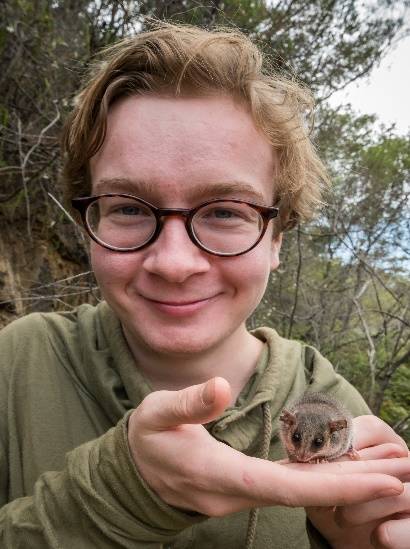 Jayden Walsh’s 2017 Gap Year was an unusual one, spent building on his already extraordinary knowledge of birds, reptiles, frogs, marsupials and other fauna. When we first met him he had neither binoculars nor camera. Now he has both there is no stopping him.
Jayden Walsh’s 2017 Gap Year was an unusual one, spent building on his already extraordinary knowledge of birds, reptiles, frogs, marsupials and other fauna. When we first met him he had neither binoculars nor camera. Now he has both there is no stopping him.
He is a highly valued guide on our PNHA Sunday Birdwalks for his ability to see and hear birds, and help others to share his experience. He starts a Bachelor of Biodiversity and Conservation at Macquarie University this year.
See footnotes for help with birdwatcher’s language.
Photo credits at end of glossary.
Left: Jayden with an Eastern Pygmy Possum.
JAYDEN’S 2017 NBBY
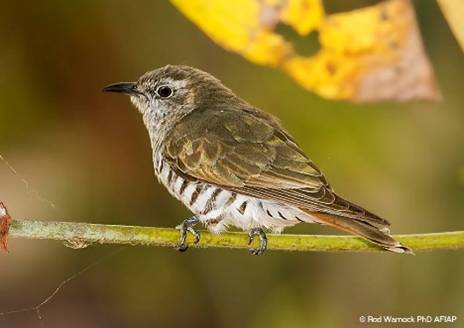 What started off as just a silly idea in early February quickly turned into a full-on physical, emotional and mental 10 month challenge. Put simply, a Big Year is a personal challenge or an informal competition among birders to see how many species of birds they can identify by sight or sound within a single calendar year and within a specific geographical area. In this instance, the geographical area is the Northern Beaches local government area and the challenge was to reach an arbitrary (and seemingly insurmountable) figure of 200 species.
What started off as just a silly idea in early February quickly turned into a full-on physical, emotional and mental 10 month challenge. Put simply, a Big Year is a personal challenge or an informal competition among birders to see how many species of birds they can identify by sight or sound within a single calendar year and within a specific geographical area. In this instance, the geographical area is the Northern Beaches local government area and the challenge was to reach an arbitrary (and seemingly insurmountable) figure of 200 species.
Once word got out that I was completing a Northern Beaches Big Year (from hereon to be referred to as NBBY) I was told that there was no way I could get 200 species. Going off Bruce Cox's list (an old birding legend 1 from the Northern Beaches) everyone was under the impression that 200 species on the NB was only just achievable in a lifetime. I did my calculations very early on using the IOC Australian list 2 and figured out that with a lot of planning, hard work and luck 190 species would be possible but not very likely.
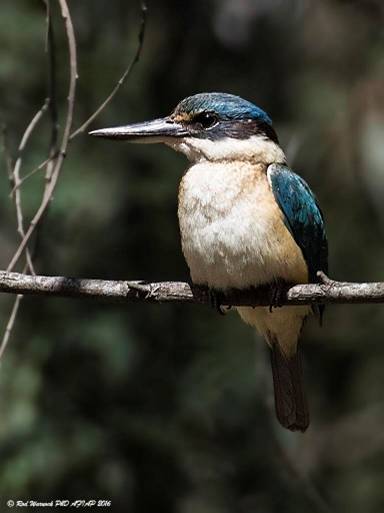 During January I had not yet decided to undertake my NBBY and as such my birding wasn't concerned with the number of species. I focused most of my energy upon nocturnal wildlife particularly herpetofauna (reptiles) of the area. Thankfully, I picked up all the summer migrants 3 (such as Sacred Kingfisher, left) as well as Superb Lyrebird, Black Bittern, six species of Raptors 4 and Bassian Thrush all in the first two weeks without much effort. However I was unsuccessful in re-finding a large flock of Pacific Swift at North Head reported on Birdline NSW. 5 One particularly interesting sighting (although not a rare bird by any stretch of the imagination), was a young Golden Whistler in Irrawong Reserve (near Warriewood) with 'rufous' plumage. From what I read they are only in this phase for 3-4 days before maturing!
During January I had not yet decided to undertake my NBBY and as such my birding wasn't concerned with the number of species. I focused most of my energy upon nocturnal wildlife particularly herpetofauna (reptiles) of the area. Thankfully, I picked up all the summer migrants 3 (such as Sacred Kingfisher, left) as well as Superb Lyrebird, Black Bittern, six species of Raptors 4 and Bassian Thrush all in the first two weeks without much effort. However I was unsuccessful in re-finding a large flock of Pacific Swift at North Head reported on Birdline NSW. 5 One particularly interesting sighting (although not a rare bird by any stretch of the imagination), was a young Golden Whistler in Irrawong Reserve (near Warriewood) with 'rufous' plumage. From what I read they are only in this phase for 3-4 days before maturing!
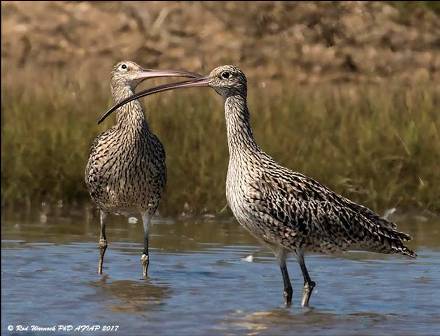 In the third week of January I visited Careel Bay to find an Eastern Curlew (right) initially found by my friend Julie. I had excellent views of the bird almost instantly as it stood feeding on the exposed mudflats alongside a Striated Heron. A sweet song alerted my attention to a Mangrove Gerygone who happily fed about 2m away at eye level!
In the third week of January I visited Careel Bay to find an Eastern Curlew (right) initially found by my friend Julie. I had excellent views of the bird almost instantly as it stood feeding on the exposed mudflats alongside a Striated Heron. A sweet song alerted my attention to a Mangrove Gerygone who happily fed about 2m away at eye level!
This species is resident at Careel Bay but not many people know about their presence here. I would highly recommend a visit to the Careel Bay mudflats, although it would've been better if you did so 40 years ago!
In the final week of January the highlight was a Shining Bronze Cuckoo (right) behind the settling ponds at Warriewood (near Shearwater Estate on Garden St.)
The absolute highlight of my year happened early on in February and was in fact what inspired me to undertake my 2017 NBBY. I needn't waffle on about all the other birds I saw in February (As good as Musk Duck, Glossy Ibis, Peaceful Dove, White-necked Heron and Barn Owl are) as they were all massively overshadowed by a pair of Australian Masked Owl. (left)
The pair consisted of a Dark Morph Female and a Light Morph Male. Both were seen from only 15m away and their chattering call was what initially alerted me to their presence. I had views of them for around a minute before they both flew off. Knowing that Masked Owls still occur and breed on the Northern Beaches makes me so happy and my sighting represents the first time a pair of Australian Masked-Owls have been seen in Northern Sydney since 1976, when they bred literally up the road from my house in Warriewood. Since my sighting in February I have seen the male on one other occasion and heard them calling three times.
February just got better and better as I discovered the second population of Dainty Tree Frog in Sydney ever, numbering over 300 individuals across eight sub-populations/breeding sites. Finally, a Little Red Flying-Fox in Ku-ring-gai Chase NP was only the tenth sighting in Sydney of a typically Northern Australian species. What a month!! (Ed: he didn’t stick to birds.)
March, April and May saw me birdwatching about four times a week and steadily increasing my list. An early morning walk along Chiltern Trail on March 4 (in Ku-ring-gai NP at Ingleside) resulted in stunning views of a Painted Buttonquail which I unintentionally flushed and refound as it stood motionless 2m away from me. The 7th March was another early morning to remember as I found a Pacific Emerald Dove in Irrawong Reserve - another species which is exceptionally rare for Sydney!
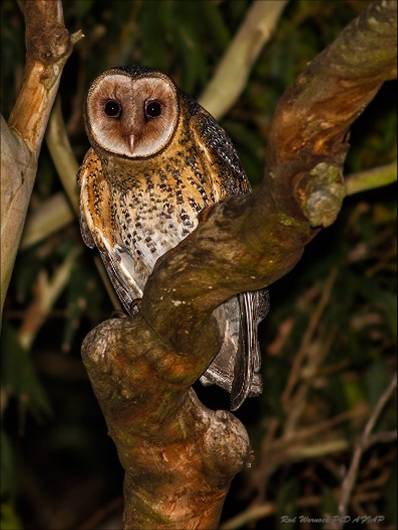
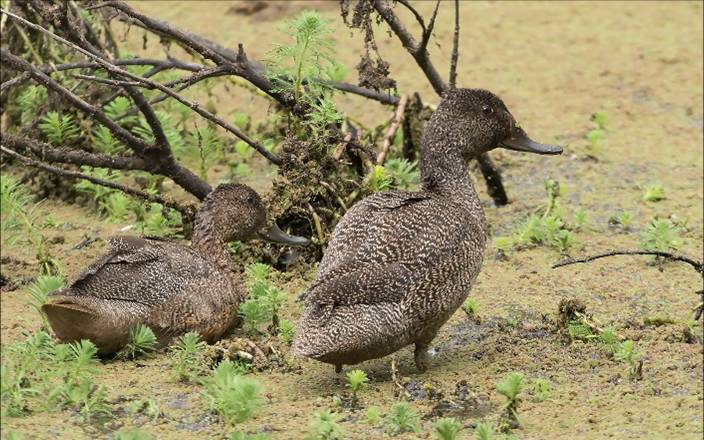
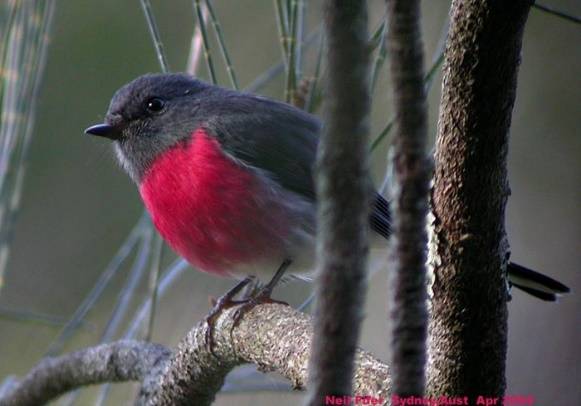 Nothing out of the ordinary for the next two weeks in March until a single Freckled Duck was reported at Warriewood Wetlands. Of course, as soon as I saw this I raced down to the wetlands with no luck. The next morning I was back very early and found not one but two Freckled Ducks! (above) They became quite a fixture and close to 200 birdwatchers from all around Sydney visited over the course of the next three weeks in order to see the Freckled Ducks of Warriewood Wetlands. Late April got me Black-fronted Dotterel at Dee Why Lagoon, White-headed Pigeon at Deep Creek and the winter migrant Honeyeater species at Chiltern Trail and lots of Rose Robins (right) at Deep Creek.
Nothing out of the ordinary for the next two weeks in March until a single Freckled Duck was reported at Warriewood Wetlands. Of course, as soon as I saw this I raced down to the wetlands with no luck. The next morning I was back very early and found not one but two Freckled Ducks! (above) They became quite a fixture and close to 200 birdwatchers from all around Sydney visited over the course of the next three weeks in order to see the Freckled Ducks of Warriewood Wetlands. Late April got me Black-fronted Dotterel at Dee Why Lagoon, White-headed Pigeon at Deep Creek and the winter migrant Honeyeater species at Chiltern Trail and lots of Rose Robins (right) at Deep Creek.
June, as always, is a very quiet and difficult month for birdwatching in Sydney. Most of my time was spent bushwalking and exploring Garigal National Park more thoroughly. The benefit of this was that I got my 100th Species for Deep Creek - a Lewin's Rail in a thick patch of Blechnum fern and Gahnia (Swordgrass). June is a particularly good month for Honeyeaters however and I got the first Northern Beaches record in more than five years of Tawny-Crowned Honeyeater along Waratah Track on West Head. They stuck around for over a month and were viewed by several other people after I reported them to Ebird 6 and Birdline NSW.
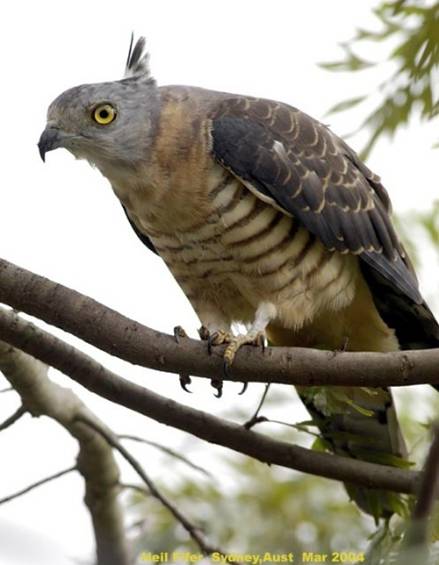 July and August were mainly spent bushwalking (or bush 'climbing' as it often ends up) and looking for a job. Birding was limited to about two days per week. The highlight was discovering a sizeable population of Large-billed Scrubwren in Ku-ring-gai Chase NP. Other bonuses included finding a White-bellied Sea-Eagle nest with a chick, two Pacific Baza (left) at Irrawong Reserve and nine other species of Raptor.
July and August were mainly spent bushwalking (or bush 'climbing' as it often ends up) and looking for a job. Birding was limited to about two days per week. The highlight was discovering a sizeable population of Large-billed Scrubwren in Ku-ring-gai Chase NP. Other bonuses included finding a White-bellied Sea-Eagle nest with a chick, two Pacific Baza (left) at Irrawong Reserve and nine other species of Raptor.
September - the month that saved my Big Year. Well, where to begin? September started off very nicely with Dusky Woodswallow, Tree Martin and Pallid Cuckoo all at West Head, and all rare birds for the Northern Beaches (NB). Then out of nowhere, bam! The interior of NSW dried up and birds that almost never occur on the NB started flocking to the coast. I'm talking White-winged Triller, Fairy Martin, Spotted Crake, White-Browed Woodswallow, Masked Woodswallow, Brown Songlark, Rufous Songlark, Restless Flycatcher, and Red-Capped Robin (the only one I missed, but seen by friends). Other good birds 7 were Curlew Sandpiper and Baillon's Crake at Long Reef Golf Couse, Large-billed Scrubwren in Irrawong, Painted Buttonquail at Elvina Bay and Swamp Harrier at Dee Why Lagoon.
October – Nil in northern beaches area. I spent October volunteering as a Field Assistant to a PhD student studying thermal tolerance of Jacky Dragons. This involved capture and data recording at multiple sites over 28 days around Bairnsdale and Gelantippy. I got two lifers 8 when down there: Hooded Robin and Grey Currawong.
November saw me finally get a job and since then my birding was limited to 1-2 days per week. I finally nailed #200 in the form of a Bar-tailed Godwit, a species which should be more common on the NB than it really is. Then I had a European Goldfinch at Dee Why Lagoon - a Northern Beaches introduced bird 9 . As exciting as it was to reach #201 it taught me a lesson not to take life too seriously. November 26 was a date locked in my diary for several months, the PNHA Warriewood Wetlands guided birdwalk. I highly recommend these walks as they provide the opportunity to meet other less familiar birds but also improve your birdwatching skills by learning from some experienced local legends. Just as well I turned up, as #202 was waiting for me, a Brown Falcon, no doubt a bird pushed to the coast by drought.
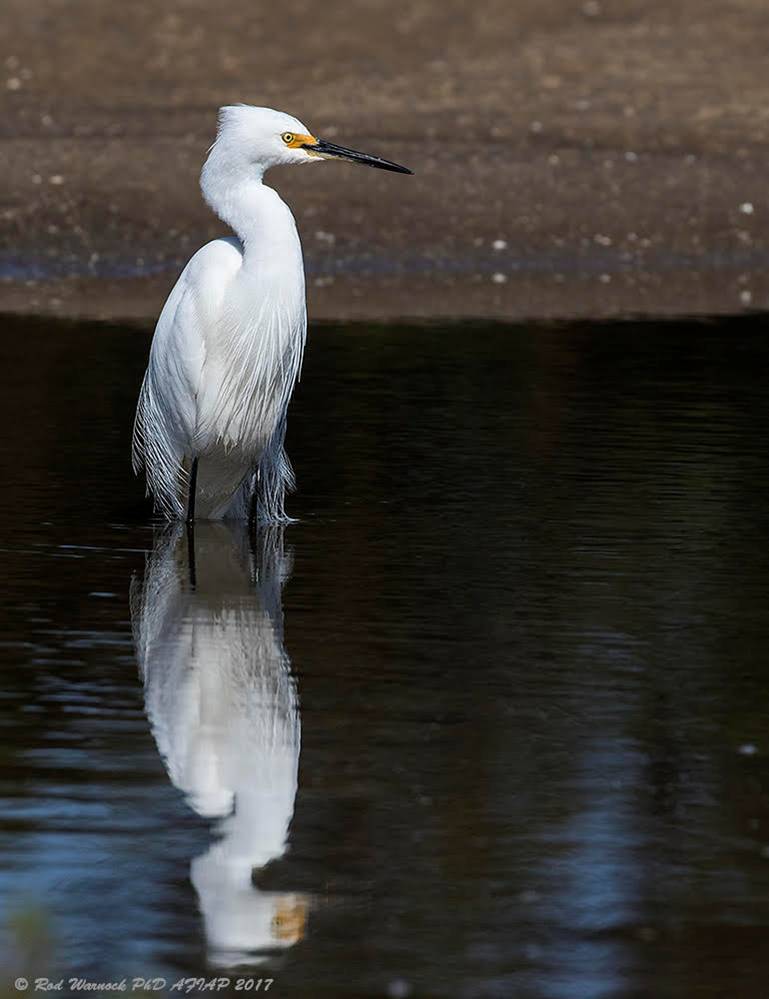 Fast forward to December and my final month of NBBY had arrived. I would normally say "The pressure was on", but it wasn't. I'd already far exceeded mine and everybody else's expectations so anything in December was a bonus. A walk through a relatively unexplored patch of 'rainforest' (actually Coastal Enriched Sandstone Moist Forest but who can remember that?) yielded another new population of Large-billed Scrubwren. One individual was recorded here several years ago but I had great views of at least three birds. Near this spot I also found a new White-bellied Sea-eagle nest. #203 was a bird which I had anticipated to get earlier in the year at Dee Why Lagoon; however, conditions were poor and nothing eventuated. As you can imagine, I was very pleased when a smallish looking Egret turned out to be a Little Egret (right) when we finally got good views of it dancing around the sandbar near South Creek, Narrabeen Lagoon.
Fast forward to December and my final month of NBBY had arrived. I would normally say "The pressure was on", but it wasn't. I'd already far exceeded mine and everybody else's expectations so anything in December was a bonus. A walk through a relatively unexplored patch of 'rainforest' (actually Coastal Enriched Sandstone Moist Forest but who can remember that?) yielded another new population of Large-billed Scrubwren. One individual was recorded here several years ago but I had great views of at least three birds. Near this spot I also found a new White-bellied Sea-eagle nest. #203 was a bird which I had anticipated to get earlier in the year at Dee Why Lagoon; however, conditions were poor and nothing eventuated. As you can imagine, I was very pleased when a smallish looking Egret turned out to be a Little Egret (right) when we finally got good views of it dancing around the sandbar near South Creek, Narrabeen Lagoon.
December was progressing quickly and I was aware of the looming Christmas responsibilities, mainly, spending time with family which meant NO BIRDING! Thankfully, on the way to work one morning I found a Eurasian Blackbird 10, another feral in the 200's bringing me to 204 species.
December 31st saw me have one final day for birdwatching. My friend Mike and I organised to go out for a morning exploring some habitats that we hadn't yet been to in the local area.
Bayview was the first area we decided to visit and a Superb Lyrebird was a nice first bird.
As we ascended a slope with towering Grey Ironbark Eucalyptus paniculata and Spotted Gum Corymbia maculata (a good area for Regent Honeyeater and Swift Parrot in winter) the rain really began to set in.
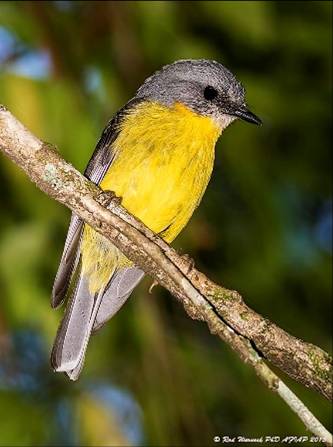 Whilst there were plenty of birds calling - Sacred Kingfisher, Brown Cuckoo-dove, Eastern Yellow Robin (left)- there was no sign of Satin Bowerbird which was my primary target for this area.
Whilst there were plenty of birds calling - Sacred Kingfisher, Brown Cuckoo-dove, Eastern Yellow Robin (left)- there was no sign of Satin Bowerbird which was my primary target for this area.
The humidity made it difficult to continue on for much longer so we decided to head to Rowland Reserve, a decision that paid off. Mike spotted a bird with an odd shape that we quickly identified as a Woodswallow 11. Eventually I got good enough views to call it as a White-Breasted Woodswallow, (below right) a rarity for our area and Sydney in general.
Over the next 20 minutes we had awesome views of at least eight White-browed Woodswallows flying around and landing on yacht masts. Interestingly one bird repeatedly fed another on the wing indicating possible local breeding or courtship. From here, we headed back to Bayview for more of a look around. Another Superb Lyrebird was nice as was a Dollarbird (below) at a suspected nesting hollow.
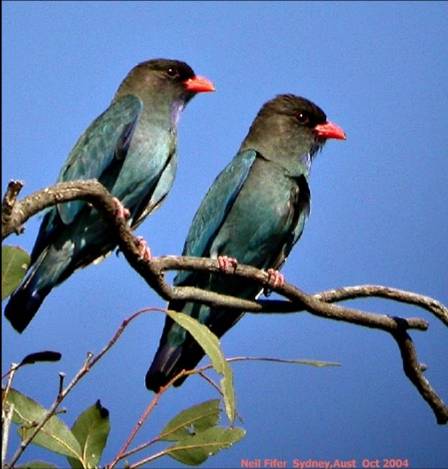
By now, it had warmed up, and so too had the Cicadas who were blaring out at 120 decibels! We decided to call it quits although the habitat looks very promising for Barking Owls, Brush-tailed Phascogale and Green Tree Frog so I will no doubt be back soon! A quick visit to Careel Bay was fruitless as multiple owners were letting their dogs run around on the mudflats chasing anything that moved. I regretfully left but was more than happy with the White-breasted Woodswallows from earlier.
I challenge you all to undertake a Northern Beaches Big Year like I have or just get out into nature, in order to discover new hotspots and learn more about the wildlife of our local area, and how to better conserve it. My sightings that I submitted to ebird all contribute to land management decisions and will ultimately help determine the fate of what bush remains in our local area. If we want to know how to protect the environment we must first know what lives in it.
And there it is! The first ever NBBY!
Jayden Walsh
Editor’s Notes: Jayden’s account mentions birds of particular interest to him and of conservation interest, so he omits common birds such as Australian Magpie, Noisy Miner and so on, though they would have been on his list.
Bird photos indicate the birds Jayden saw, not the actual birds.
Images copyright by Rod Warnock: Sacred Kingfisher, Eastern Curlew, Shining Bronze Cuckoo, Australian Masked Owl, Pacific Baza, Eastern Yellow Robin, Brown Cuckoo Dove, White Breasted Woodswallow.
Images by Neil Fifer: Freckled Duck, Rose Robin, Dollarbird
Footnotes:
- Legend. The late Bruce Cox, the “birding legend”, is legendary for his bird watching skills and knowledge. Bruce compiled lists of birds recorded in the northern beaches area and set up a Google group which connected birdwatchers mostly in the northern Sydney area.
- IOC List. IOC Australian list - refers to International Ornithological Congress, see http://avibase.bsc-eoc.org/checklist.jsp?region=au&list=ioc
- Summer migrants. Some such as the Sacred Kingfisher breed in the southern summer, then move north for the winter. Others such as Eastern Curlew breed in the northern hemisphere but come here to escape the northern winter.
- Raptor. A bird that seizes prey with its talons, such as an eagle, hawk, owl.
- Birdline NSW. A database supported by Birdlife Australia. Records contribute to the ongoing study of Australian birds, the Australian Bird Atlas.
- Ebird. a global database operated by Cornell university. A website on which you can record unusual birds you’ve seen.
- Good birds, or nice birds are ones you really wanted to see; uncommon; made you happy.
- Lifer. a bird you have yearned to see for some time but haven’t been successful yet, or a bird you have just seen after long wishing to see it.
- Goldfinch. The European Goldfinch is a widespread species in Europe, central Asia and northern Africa and was introduced to Australia in the 1860s. Originally restricted to urban areas, the European Goldfinch has successfully moved out into country areas of south-eastern Australia, including Tasmania. (from Birds in Backyards website)
- Eurasian Blackbird. The Common (European) Blackbird was introduced to Australia at Melbourne in the 1850s. The male is the 'black' bird, with deep orange to yellow bill, a narrow yellow eye-ring and dark legs. The female is a brown bird, with some streaks or mottling, and has a dark bill and legs. Immature birds are similar to the female with lighter underparts. (from Birds in Backyards website.) These two birds would have arrived during the 19th century acclimatisation movement, when English or European birds and animals were introduced to make Australia feel more like “home”.
- Woodswallow. Several species, unusual around Sydney. They hunt insects in the air and have unusual brush tongues.
- To raise public awareness of the conservation value of the natural heritage of the Pittwater area: its landforms, watercourses, soils and local native vegetation and fauna.
- To raise public awareness of the threats to the long-term sustainability of Pittwater's natural heritage.
- To foster individual and community responsibility for caring for this natural heritage.
- To encourage Council and the NSW Government to adopt and implement policies and works which will conserve, sustain and enhance the natural heritage of Pittwater.
